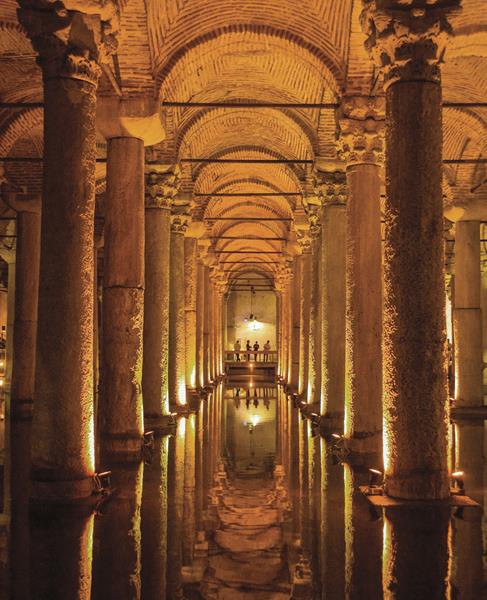Istanbul’s Underworld
Sidebar to: Constantinople: Christianity’s First Capital

Istanbul’s historic center is a tapestry of the past and present, with ancient buildings, plazas, roads, and aqueducts woven into each successive iteration of the city’s urban fabric. Yet while there are visible pockets of the past to be found in the city above ground, the majority of the city’s past lies—quite literally—beneath its present. Istanbul’s various historical epochs are represented in its now-subterranean architectural layers, the buildings of one era frequently serving as the foundations for the next generation of structures.
The ongoing discoveries of Roman and Byzantine structures are frequently made as a result of modern construction. Projects such as building renovations, road repairs, and the laying of new pipes and power lines all have the potential to help archaeologists render a clearer map of Istanbul’s ancient layers. Sometimes ancient structures come to light simply through the efforts of archaeologists who are working to document those subterranean structures known to locals but that have not yet been properly surveyed and mapped.
Through a combination of serendipitous discoveries and diligent archaeological documentation, more of Istanbul’s ancient past is being brought to light. A Roman bathhouse that serves as the boiler room of a modern apartment building, an ancient church beneath a hookah bar, and an ancient water cistern that has found a second life as a jeweler’s workshop are just a few examples of the ways in which Istanbul’s past intersects with its present below the surface.
Already a library member? Log in here.
Institution user? Log in with your IP address.

